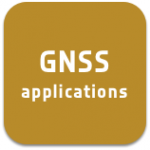If you wish to contribute or participate in the discussions about articles you are invited to contact the Editor
Category:Road Applications: Difference between revisions
m (Created page with "{| border=0 style="font-size: 90%" |} {| style="border:1px solid #aaa" cellpadding="5" cellspacing="2" |- | style="width:90%; vertical-align:top"| ===Description=== On this page ...") |
Rui.Pereira (talk | contribs) No edit summary |
||
| Line 5: | Line 5: | ||
| style="width:90%; vertical-align:top"| | | style="width:90%; vertical-align:top"| | ||
===Description=== | ===Description=== | ||
The road sector is a major potential market for GNSS applications. Satellite navigation receivers are now commonly installed in new cars as a key tool for providing new services to people on the move: electronic charging, real-time traffic information, emergency calls, route guidance, fleet management and Advanced Driving Assistance Systems. | |||
Satellite navigation will help regulate road use and minimize traffic jams. If all vehicles are fitted with a navigation satellite receiver and a data transmitter, their position can be relayed automatically every few seconds to a central station. This information can then be used in a number of ways to control road usage. It could, for example, be used to charge motorists for using a stretch of road, to restrict access to congested roads, or to inform drivers of congestion and suggest alternative, quieter routes. | |||
The full introductory article can be read [[Road Applications|here]]. | The full introductory article can be read [[Road Applications|here]]. | ||
Revision as of 09:19, 2 May 2011
DescriptionThe road sector is a major potential market for GNSS applications. Satellite navigation receivers are now commonly installed in new cars as a key tool for providing new services to people on the move: electronic charging, real-time traffic information, emergency calls, route guidance, fleet management and Advanced Driving Assistance Systems. Satellite navigation will help regulate road use and minimize traffic jams. If all vehicles are fitted with a navigation satellite receiver and a data transmitter, their position can be relayed automatically every few seconds to a central station. This information can then be used in a number of ways to control road usage. It could, for example, be used to charge motorists for using a stretch of road, to restrict access to congested roads, or to inform drivers of congestion and suggest alternative, quieter routes. The full introductory article can be read here. |
Pages in category "Road Applications"
The following 6 pages are in this category, out of 6 total.
